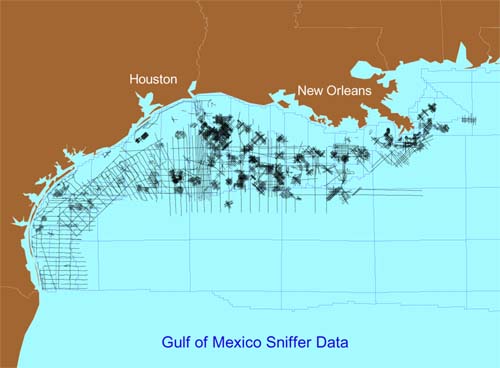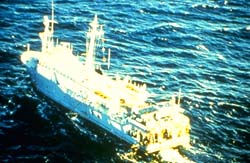
MARINE SNIFFER DATABASE - GULF OF MEXICO


In 1967 the Gulf Oil Company initiated a program to develop technology
for locating seeps in the marine environment. By 1974 a fairly sophisticated
system had been developed and installed on Gulf's seismic vessel, the
R/V Hollis Hedberg. This system, operated by Gulf from 1974 to 1983 was
used to collect an extensive "sniffer" geochemical database
in the Gulf of Mexico that contains over 191,000 dissolved gas analyses.
A detailed evaluation of this database made with respect to discoveries
made after the geochemical data was recorded showed that the data was
88 % effective in finding new commercial production. This technology not
only has the ability to predict whether a block has hydrocarbon potential,
but also whether it is more likely to produce oil or gas, a very important
economic factor in the evaluation of offshore blocks. This marine "sniffer"
database is now available from Exploration Technologies, Inc.
Related links:
Map of Sniffer Locations (PDF Format, 3.8 MB)
Researcher describes "sniffing" for seeps, published in the Gulf Oilmanac 2-80, p.22
Hedberg Rules! - Published in Gulf Oilmanac 6-80, pp. 2-4
Utilization of Hydrocarbon Seep Information, H.D. Hedberg, March, 1981
NORTHERN GULF OF MEXICO:
AN INTEGRATED APPROACH TO SOURCE MATURATION AND MIGRATION
L.M. Wenger, L.R. Goodoff, O.P. Gross, S.C. Harrison, K.C. Hood
First Joint AAPG/AMGP Research Conference
"Geological Aspects of Petroleum Systems"
October 2-6, 1994
Mexico City, Mexico